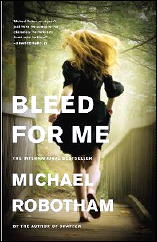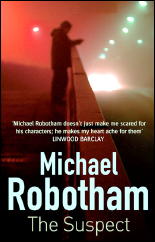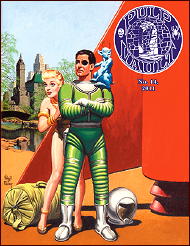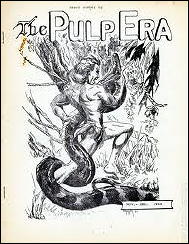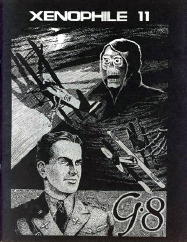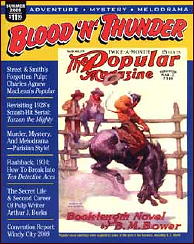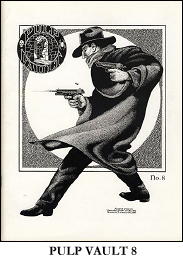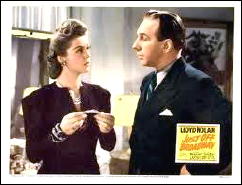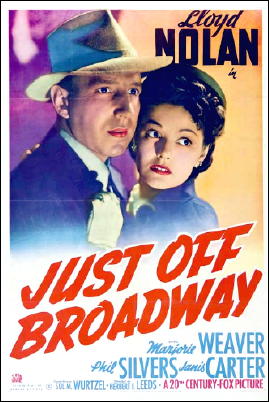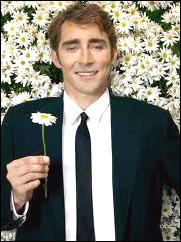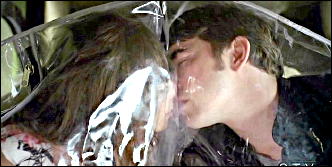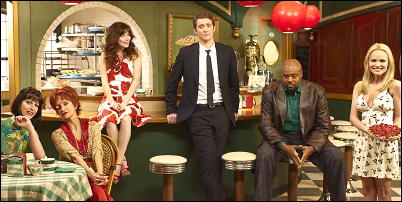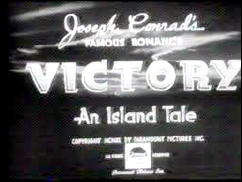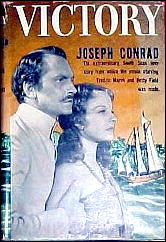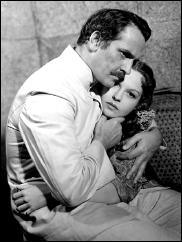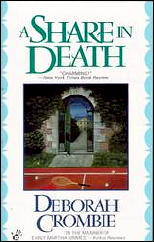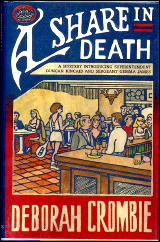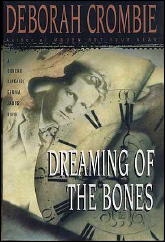CONVENTION REPORT: PulpFest 2011
by Walker Martin
Over the past 40 years I guess I’ve attended 40 pulp conventions and I’ve always traveled by car either alone or with another collector. This is the first year that five of us rented a van and it was quite an experience. Between the five collectors there must of been at least 200 years of collecting books, pulps, digests, and vintage paperbacks. Three of us even collect original pulp cover paintings, not to mention slicks and other old magazines such as literary magazines, men’s adventure magazines, etc.
We kept each other amused by recalling strange book adventures and bizarre topics like The Craziest Pulp Collector I Have Known. Needless to say, some of the people in the van qualify for this title! I might as well mention the names of these demented souls who spend their lives dreaming of pulps and books. In addition to myself, the collectors cooped up in this van were Nick Certo, Steve Kennedy, Digges La Touche, and last and not least, Ed Hulse, who was our driver.
Somehow, this overloaded van arrived safely a little over eight hours later. Even more surprising was the fact that we had not killed each other and were still on speaking terms. After checking into the Ramada Plaza, we all headed for the dealer’s room to set up our tables.
It was the same large room as last year and held over 100 tables. Because the large unloading doors were open to the 95 degree heat, there appeared to be very little air conditioning in effect.
We were not amused to find out at dinner that the restaurant was also very warm. Not only that but they were out of certain items on the menu, including hamburger at one meal. When I ordered beer, practically every brand I tried to get was not available. Frankly, the restaurant did not seem set up to handle a convention weekend.
Next day when the dealer’s room opened officially, it was obvious that this was another rousing success due to the hard work of the PulpFest committee: Mike Chomko, Jack Cullers, Ed Hulse, and Barry Traylor. Jack Cullers also seemed to have an army of support from his family and friends.
I really must say these people deserve the thanks of pulp collectors for putting on such an excellent show. The attendance was the highest yet of any Pulpcon or PulpFest, over 425 attendees, which is a nice 10% increase over last year’s figure.
At my table, I sold far more than I thought I would, selling DVDs, cancelled checks from the files of Popular Publications and Munsey, and all 39 duplicate Manhunt’s.
The biggest sale I noticed involved a 1929 Black Mask with white paper, in fine condition. The seller asked me what I thought it was worth and I said over $500, perhaps closer to a $1000. The first collector I told ran over and paid $900 for the issue. The unusual thing is that the reason the magazine sold was not because of the fine condition or because it was a 1929 Black Mask with a Hammett story. It sold because the collector was a rabid collector of Erle Stanley Gardner.
Another big sale I witnessed was the Ace Double original cover painting for Mrs. Homicide by Norman Saunders. After much haggling, this went for over $8,000.
Several pulp reprints made their debut including Ed Hulse’s new issue of Blood n Thunder; Savages by Gordon Young; and The Best of Blood n Thunder. I bought all three publications and Ed said he sold just about all the copies that he brought to the convention.
Laurie Powers also had good sales on her new book, a collection of Paul Power’s stories, titled Riding the Pulp Trail. Tom Roberts of Black Dog Books also had several new books for sale, including Pulp Vault 14, the best single issue of a pulp fanzine ever published.
Matt Moring of Altus Press has an ambitious reprint schedule, including collections of Fred Nebel’s Tough Dick Donahue, Kennedy and McBride, and Cardigan. These are major publications and well worth buying because the original Black Mask and Dime Detective pulps are so expensive.
The 20th issue of The Pulpster also made its debut and looked like one of the best issues yet. The editor is Tony Davis and he included 10 articles, including an unpublished story by H. Russell Wakefield. There were articles on William Cox and H. Bedford Jones and Don Hutchison’s memories John Fleming Gould. He appeared at Pulpcon 19 in Wayne, NJ and I remember his visit vividly. I was high bidder on one of his sketches showing G-8’s Herr Doktor Krueger. John Locke is also present with an interesting piece on “Hunting Pulpsters In Graveyards”
I heard later that John Locke and John Wooley visited the gravesite of D.L. Champion, who wrote such crazy series starring Inspector Allhoff for Dime Detective, and Rex Sackler for Black Mask. The grave is evidently near the convention hotel and I would have liked to visit it but then again I get very emotional about pulp writers and probably would have made a fool of myself, not to mention getting arrested for trying to sell the remains at PulpFest.
One of the big surprises of the convention was the visit of former Pulpcon chairman and organizer, Rusty Hevelin. In the early years, Rusty single handedly kept Pulpcon going and deserves our thanks for his efforts, without which there might not be a convention all these years later.
He received a round of applause as he entered the dealer’s room and because he is in his late 80’s, I figured he would just visit for a short time and then leave. However, he evidently enjoyed himself and stayed all three days. He even attended the evening programming with his friend, Gay Haldeman. Welcome back Rusty.
Another collector I was glad to see, was Gordon Huber, the only person to actually attend every Pulpcon and Pulpfest since the first one in 1972. Unfortunately there were several collectors who could not attend this year, including such long time attendees as Al Tonik, Steve Lewis, and Dave Kurzman.
The evening programming was some of the best I’ve ever seen. Some of the highlights were the three “Shadow” shorts from 1931-1932; the speech given by David Saunders on three pulp artists; the grandaughters of the pulps panel featuring Laurie Powers, Karen Cunningham, and Nicky Wheeler-Nicholson; Stephen Haffner’s talk on C. L. Moore; Garyn Roberts discussion of steampunk in the pulps and dime novels: and the panel on Walter Gibson and The Shadow.
The auction was disappointing to me but I imagine some collectors found some good items. Tony Tollin won the Munsey Award for his extensive project which reprints the pulp novels featuring The Shadow and Doc Savage.
The daytime programming consisted of readings and panels featuring contemporary authors discussing the new pulp fiction. The Pulpster also had an article about this recent movement and I have to admit I like the old pulp fiction from the original magazines. But evidently there are some fans of this new pulp fiction.
Finally, I would like to thank the people responsible for stocking the Hospitality Room with beer, soda, and snacks. I also noticed a couple pizzas floating around and whoever ordered them let me have a piece. Each year, I notice Rusty Burke in the room and he is one of the collectors responsible for the beer and locking up the room. Thank you Rusty.
I hope to see even more collectors in attendance next year because it is so important to support this convention.
After all, book and pulp collectors are my favorite people…
